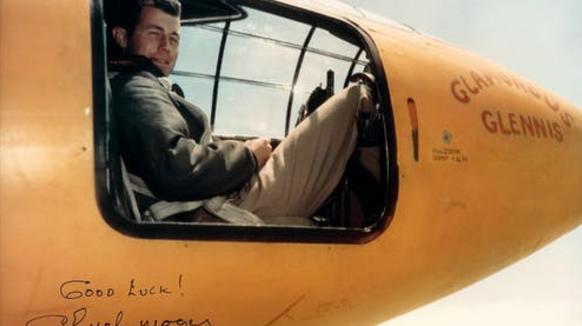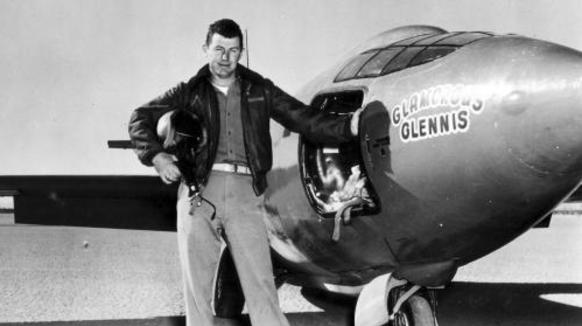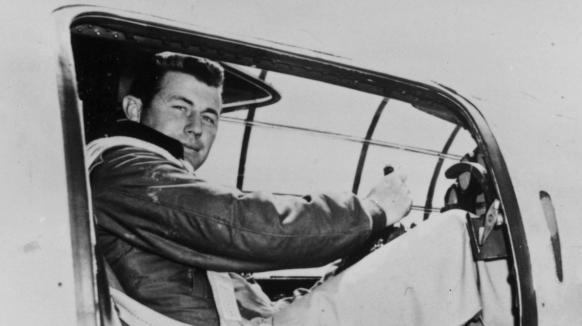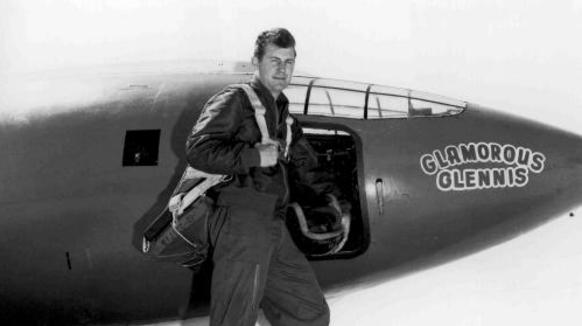Chuck Yeager
| Born | February 13, 1923 |
| Hometown | Myra, West Virginia, U.S. |
| Net worth | $1 million |
| Height | 5'10" (1.78m) |
| Spouse | Victoria Scott D'Angelo, Glennis Dickhouse |
| Children | Susan Yeager, Michael Yeager, Don Yeager, Sharon Yeager Flick |
| Parents | Susie Mae Yeager, Albert Hal Yeager |
Photos
Top Stories
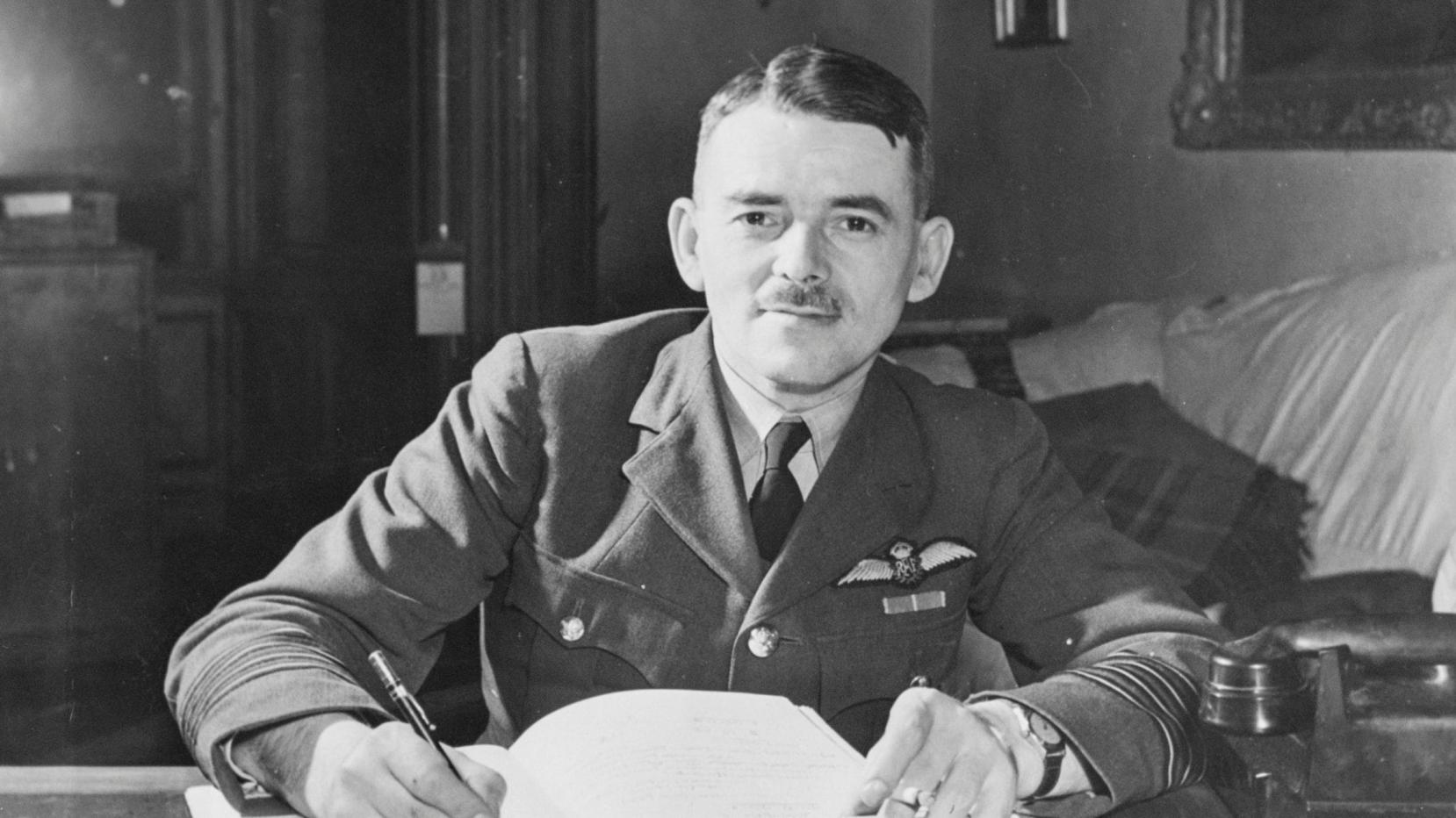
Sir Frank Whittle: the test pilot who revolutionised aviation
- News of the death of Chuck Yeager last week, aged 97, prompted tributes across the aerospace world to ‘the man who broke the sound barrier’. As a young US Air Force test pilot in October 1947, Yeager raced across the sky over California’s Mojave desert in a bullet-shaped experimental plane called the Bell X-1. It marked the start of the celebrated era in American military aviation that was chronicled in such dizzying style by Tom Wolfe in his 1979 book The Right Stuff. (Yeager, wrote Wolfe, was ‘the most righteous’ of all who possessed said stuff.) In most of its essentials, though, the shape of the Bell X-1 was fashioned by British engineers in the home counties. They called it the M.52 and began work on it in 1944 at the main plant of a small manufacturer called Miles Aircraft in Berkshire. It was to be powered by two W.2/700 jet engines – the latest in a succession of highly innovative designs by the man whose pioneering work on jet flight transformed the world of civil as well as military aviation: Frank Whittle. Whittle himself had once been a brave test pilot. As an RAF officer in 1931 he had been seconded briefly to the Royal Navy, to fly planes catapulted off ships. (One of his roles involved making ‘pancake’ landings on the sea, to test the efficiency of newly invented flotation bags. Whittle made several landings, never mentioning to anyone that he couldn’t swim.) He flew at little more than 100mph in those days, in biplanes with wire-braced wings and fabric-covered fuselages. Many great engineers contributed to the astonishing leap in aircraft technology that led from those biplanes to supersonic flight less than 20 years later.
MOVIES & TV SHOWS
- Entertainment·Yahoo Movies UK
Deadpool and Wolverine post-credit scenes explained
Marvel fans are no doubt wondering if the threequel continues the tradition of having a post-credit scene, or multiple, after the main event.
Thanks for your feedback! - Entertainment·Yahoo Movies UK
What you need to remember from Marvel and Fox to understand Deadpool and Wolverine
The new Marvel film is a love letter to superhero movies of the past, so if you haven't seen them all or Disney+'s TV shows then you might struggle.
Thanks for your feedback! - Lifestyle·Yahoo Life UK
Every festival camping essential you need for Latitude, Bestival and more
From robust trolleys to cosy sleeping bags, these are the camping must-haves that make sleeping in a field a doddle.
Thanks for your feedback! - News·Yahoo News UK
What Michelle Obama has said about running for US president
A recent poll showed Michelle Obama is best placed to beat Donald Trump in an election, despite her repeated insistence she has no intention of doing so.
Thanks for your feedback! - News·Yahoo News UK
Who will win the US presidential election? Latest odds and polls
Kamala Harris says she has secured the Democratic party's nomination for president, but can she beat Donald Trump in November's election?
Thanks for your feedback! - News·Yahoo News UK
What we know about A61 crash that killed six as man released on bail
Shane Roller, Shannen Morgan and daughters Rubie and Lillie Morgan-Roller, along with couple Christopher and Janine Barton, were killed in the crash on 21 July.
Thanks for your feedback! - Entertainment·Yahoo Movies UK
Deadpool and Wolverine's difficult journey into the Marvel Cinematic Universe
Ryan Reynolds and Hugh Jackman will make their official entry into the MCU with Deadpool & Wolverine, but it's been a rocky ride for both of them.
Thanks for your feedback! - Entertainment·Yahoo Movies UK
Why isn't Vinnie Jones in Deadpool and Wolverine?
The actor speaks to Yahoo UK about his reasoning for not returning to the super villain role for Marvel's Deadpool and Wolverine.
Thanks for your feedback! - Entertainment·Yahoo Movies UK
What you need to know about Deadpool & Wolverine
Hugh Jackman is back, and he’s ready to carve himself a new legacy as Wolverine in new MCU blockbuster Deadpool & Wolverine.
Thanks for your feedback! - Entertainment·Yahoo Movies UK
Who is playing Lady Deadpool in the MCU?
Lady Deadpool is definitely making her big screen debut in Deadpool and Wolverine, but with theories running wild the question is who could it be?
Thanks for your feedback!
- Terms and Privacy Policy
- Privacy dashboard
- About our ads
- Help
- Safety
- Advertise
- Feedback
- Supply chain transparency
